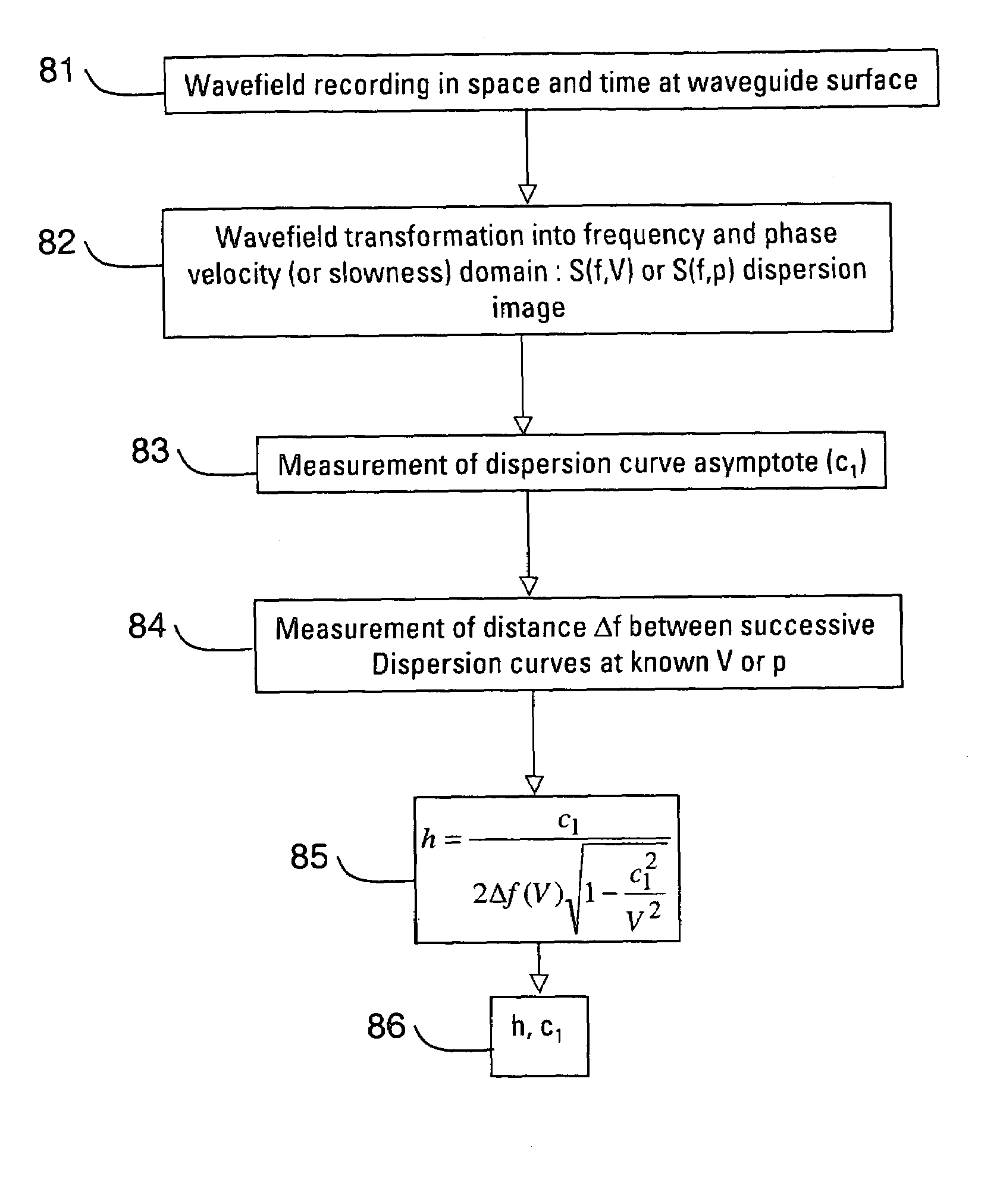Determination of waveguide parameters
- Summary
- Abstract
- Description
- Claims
- Application Information
AI Technical Summary
Benefits of technology
Problems solved by technology
Method used
Image
Examples
Embodiment Construction
[0032]FIG. 2 illustrates typical paths of seismic energy at a survey location where the earth's interior is represented by a layer 5 that is overlaid by a thin layer 4. A seismic source 6 is located in the overlying layer 4 and, when actuated, emits seismic energy. The emitted seismic energy is detected by an array of suitable detectors 7 disposed at the earth's surface.
[0033]The overlying layer 4 has thickness h, acoustic velocity c1 and density ρ1. The underlying layer 5 has an acoustic velocity C2 and density ρ2, which are assumed to be different from the acoustic velocity and density of the overlying layer 4 (C2 will be greater than c1). In theory, the layer 5 is assumed to have infinite depth. However, in practice, described methods also work when layer 5 has finite depth.
[0034]FIG. 2 shows three possible paths of seismic energy emitted by the source 6. Seismic energy that travels along the path shown as a dotted line is incident on the interface 8 between the overlying layer 4...
PUM
 Login to View More
Login to View More Abstract
Description
Claims
Application Information
 Login to View More
Login to View More - R&D
- Intellectual Property
- Life Sciences
- Materials
- Tech Scout
- Unparalleled Data Quality
- Higher Quality Content
- 60% Fewer Hallucinations
Browse by: Latest US Patents, China's latest patents, Technical Efficacy Thesaurus, Application Domain, Technology Topic, Popular Technical Reports.
© 2025 PatSnap. All rights reserved.Legal|Privacy policy|Modern Slavery Act Transparency Statement|Sitemap|About US| Contact US: help@patsnap.com



